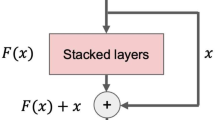Abstract
Atmospheric duct (AD) is a natural phenomenon affected by humidity or air pressure diversities, which impacts the propagation of electromagnetic signals. Recent studies have been focused on ADH prediction based on meteorological data which makes the task of real-time ADH prediction challenging and impacts the global representation of ADs leading to maritime communications security issues. We address these issues by discovering a novel way to abstract the spatial and temporal features from the historical data. Thus, we proposed a framework based on DNN models and attention mechanisms to predict the ADH in a real-time form from the abstracted features. Our experimental results demonstrate that our technique improves the performance of real-time prediction and reduces the acquisition cost, professional devices can receive it in real-time through IoT to avoid dangerous areas.
Access this chapter
Tax calculation will be finalised at checkout
Purchases are for personal use only
Similar content being viewed by others
References
Towards neural network-based communication system: attack and defense. IEEE Trans. Dependable Secure Comput., 3238–3250 (2023)
Alappattu, D.P., Wang, Q., Kalogiros, J.: Anomalous propagation conditions over eastern Pacific Ocean derived from MAGIC data. Radio Sci. ,1142–1156 (2016)
Babin, S.M., Young, G.S., Carton, J.A.: A new model of the oceanic evaporation duct. J. Appl. Meteorol., 193–204 (1997)
Cai, Z., Chen, Q.: Latency-and-coverage aware data aggregation scheduling for multihop battery-free wireless networks. IEEE Trans. Wireless Commun., 1770–1784 (2021)
Cai, Z., He, Z.: Trading private range counting over big IoT data. In: Proceedings of the 2019 IEEE 39th International Conference on Distributed Computing Systems (ICDCS), pp. 144–153 (2019)
Cai, Z., Zheng, X., Wang, J., He, Z.: Private data trading towards range counting queries in internet of things. IEEE Trans. Mobile Comput., 4881–4897 (2023)
Chai, X., Li, J., Zhao, J., Hu, Y., Zhao, X.: NWPP-EDH: Numerical weather prediction products evaporation duct regional prediction model. Front. Earth Sci. (2023)
Deng, G., Cahill, L.: An adaptive Gaussian filter for noise reduction and edge detection. In: Proceedings of the 1993 IEEE Conference Record Nuclear Science Symposium and Medical Imaging Conference, vol. 3, pp. 1615–1619 (1993)
Han, J., et al.: Evaporation duct height nowcasting in China’s yellow sea based on deep learning. Remote Sens., 1577 (2021)
Han, J., et al.: A Classifying-inversion method of offshore atmospheric duct parameters using AIS data based on artificial intelligence. Remote Sens., 3197 (2022)
He, Z., Cai, Z.: Trading aggregate statistics over private internet of things data. IEEE Trans. Comput., 394–407 (2024)
Jayamanmadharao, M.: Implementation of object oriented approch for noise reduction using fuzzy logic. Int. J. Eng. Sci. Technol. (2011)
Jozefowicz, R., Zaremba, W., Sutskever, I.: An empirical exploration of recurrent network architectures. In: Proceedings of the 32nd International Conference on Machine Learning, pp. 2342–2350 (2015)
Kumar, A., Sodhi, S.S.: Comparative analysis of Gaussian filter, Median filter and denoise autoenocoder, pp. 45–51, March 2020
Liao, Q., Mai, Y., Sheng, Z., Wang, Y., Ni, Q., Zhou, S.: The comparison of long short-term memory neural network and deep forest for the evaporation duct height prediction. IEEE Trans. Antennas Propag., 4444–4450 (2023)
Niu, Z., Zhong, G., Yu, H.: A review on the attention mechanism of deep learning. Neurocomputing, 48–62 (2021)
Oyesina, K.A., Ogunlade, M.A.: Noise reduction using arithmetic mean filtering (a comparison study of application to different noise types). Int. J. Sci. Res. (IJSR), 1–4 (2017)
Paulus, R.A.: Practical application of an evaporation duct model. Radio Sci., 887–896 (1985)
Yang, C., Wang, J., Shi, Y.: A multi-dimensional deep-learning-based evaporation duct height prediction model derived from MAGIC data. Remote Sens., 5484 (2022)
Zhao, W., Li, J., Zhao, J., Jiang, T., Zhu, J., Zhao, D., Zhao, J.: Research on evaporation duct height prediction based on back propagation neural network. IET Microwaves Antennas Propag., 1547–1554 (2020)
Zhao, W., et al.: An evaporation duct height prediction model based on a long short-term memory neural network. IEEE Trans. Antennas Propag., 7795–7804 (2021)
Zhou, X., Kollias, P., Lewis, E.R.: Clouds, precipitation, and marine boundary layer structure during the MAGIC field campaign. J. Clim., 2420–2442 (2015)
Zhu, X.: Elevated duct height refinement (2019). https://github.com/zxy1012-maker/Elevated-duct-height-Refinement
Acknowledgement
This research work was supported by Sichuan Science and Technology Program No. 2023YFG0021.
Author information
Authors and Affiliations
Corresponding author
Editor information
Editors and Affiliations
Rights and permissions
Copyright information
© 2025 The Author(s), under exclusive license to Springer Nature Switzerland AG
About this paper
Cite this paper
Zhang, B., Yan, K., Hui, B., Huang, Q., Gao, H. (2025). Real-Time Atmospheric Duct Height Prediction Framework Based on Spatio-Temporal to Ensure Maritime Communication Security. In: Cai, Z., Takabi, D., Guo, S., Zou, Y. (eds) Wireless Artificial Intelligent Computing Systems and Applications. WASA 2024. Lecture Notes in Computer Science, vol 14998. Springer, Cham. https://doi.org/10.1007/978-3-031-71467-2_20
Download citation
DOI: https://doi.org/10.1007/978-3-031-71467-2_20
Published:
Publisher Name: Springer, Cham
Print ISBN: 978-3-031-71466-5
Online ISBN: 978-3-031-71467-2
eBook Packages: Computer ScienceComputer Science (R0)




